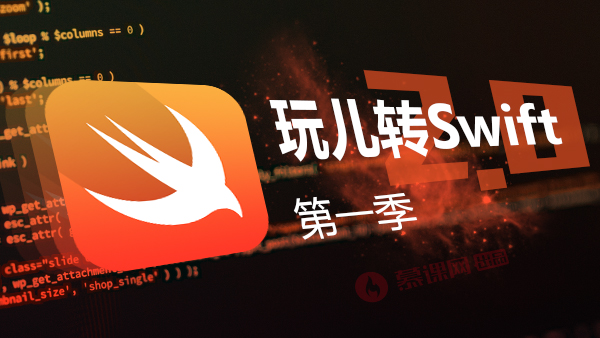以前写了关于KVO\color{#0000FF}{KVO}KVO的实现原理的文章探究KVO的底层实现原理现在我们也探究一下KVC的底层实现
原理
KVC\color{#FF0000}{KVC}KVC的全称是Key-Value Coding俗称“键值编码”可以通过一个key来访问某个属性。
主要API
- (void)setValue:(id)value forKeyPath:(NSString *)keyPath;
- (void)setValue:(id)value forKey:(NSString *)key;
- (id)valueForKeyPath:(NSString *)keyPath;
- (id)valueForKey:(NSString *)key;
原理
-
setValue:forKey:的原理
-
valueForKey:的原理
KVC\color{#FF0000}{KVC}KVC底层实现原理(如下)
KVC\color{#FF0000}{KVC}KVC主要通过isa来实现其内部查找定位的. 默认的实现方法由NSOject提供isa指针, 如其名称所指,(就是is a kind of的意思), 指向分发表对象的类. 因为对象的方法和属性成员变量都是存储在类对象中对象使用KVC的时候通过isa找到类对象进而去属性列表查找该属性。。
- 具体主要分为三大步
- 第一步寻找该属性有没有setsetter方法有就直接赋值
- 第二步寻找有没有该属性带下划线的成员属性有就直接赋值
- 第三步寻找有没有该属性的成员属性有就直接赋值
- 或者这么说
- 1、首先搜索setKey:方法.(key指成员变量名, 首字母大写)
- 2、上面的setter方法没找到, 如果类方法accessInstanceVariablesDirectly返回YES. 那么按 _key, _isKeykey, iskey的顺序搜索成员名.(NSKeyValueCodingCatogery中实现的类方法, 默认实现为返回YES)
- 3、如果没有找到成员变量, 调用setValue:forUnderfinedKey:
比如说如下的一行KVC的代码
-
举个e.g:
[object setValue:@"13123" forKey:@"uuid"];
就会被编译器处理成:
// 首先找到对应sel
SEL sel = sel_get_ uuid("setValue:forKey:");
// 根据object->isa找到sel对应的IMP实现指针
IMP method = objc_msg_lookup (object->isa,sel);
// 调用指针完成KVC赋值
method(object, sel, @"13123", @"uuid");
-
KVC\color{#FF0000}{KVC}KVC的运用场景
-
1.动态的取值和设值
-
2.用KVC来访问和修改私有变量
-
3.Model和字典转换
-
4.修改一些控件的内部属性
-
最常用的是个性化UITextField中的placeHolderText
-
这里的关键点是如何获取你要修改的样式属性名也就是key or keyPath名
-
-
-
举个给UITextView添加占位文字
// 如何给UITextView设置placeHodler(占位文字)
let ideaTextView = UITextView()
ideaTextView.backgroundColor = UIColor.orange
ideaTextView.frame = CGRect(x: 20, y: 200, width: 300, height: 100)
let placeHolderLabel = UILabel()
placeHolderLabel.text = "写下你的问题或建议我们将及时跟进解决建议上传截图帮助我们解决问题感谢"
placeHolderLabel.numberOfLines = 0
placeHolderLabel.font = UIFont.systemFont(ofSize: 15)
placeHolderLabel.textColor = UIColor.lightGray
placeHolderLabel.sizeToFit()
ideaTextView.addSubview(placeHolderLabel)
ideaTextView.setValue(placeHolderLabel, forKeyPath: "_placeholderLabel")
ideaTextView.font = placeHolderLabel.font
Foundation框架NSObject(NSKeyValueCoding)对主要API说明
/* Return YES if -valueForKey:, -setValue:forKey:, -mutableArrayValueForKey:, -storedValueForKey:, -takeStoredValue:forKey:, and -takeValue:forKey: may directly manipulate instance variables when sent to instances of the receiving class, NO otherwise. The default implementation of this property returns YES.
*/
@property (class, readonly) BOOL accessInstanceVariablesDirectly;
/* Given a key that identifies an attribute or to-one relationship, return the attribute value or the related object. Given a key that identifies a to-many relationship, return an immutable array or an immutable set that contains all of the related objects.
The default implementation of this method does the following:
1. Searches the class of the receiver for an accessor method whose name matches the pattern -get<Key>, -<key>, or -is<Key>, in that order. If such a method is found it is invoked. If the type of the method's result is an object pointer type the result is simply returned. If the type of the result is one of the scalar types supported by NSNumber conversion is done and an NSNumber is returned. Otherwise, conversion is done and an NSValue is returned (new in Mac OS 10.5: results of arbitrary type are converted to NSValues, not just NSPoint, NRange, NSRect, and NSSize).
2 (introduced in Mac OS 10.7). Otherwise (no simple accessor method is found), searches the class of the receiver for methods whose names match the patterns -countOf<Key> and -indexIn<Key>OfObject: and -objectIn<Key>AtIndex: (corresponding to the primitive methods defined by the NSOrderedSet class) and also -<key>AtIndexes: (corresponding to -[NSOrderedSet objectsAtIndexes:]). If a count method and an indexOf method and at least one of the other two possible methods are found, a collection proxy object that responds to all NSOrderedSet methods is returned. Each NSOrderedSet message sent to the collection proxy object will result in some combination of -countOf<Key>, -indexIn<Key>OfObject:, -objectIn<Key>AtIndex:, and -<key>AtIndexes: messages being sent to the original receiver of -valueForKey:. If the class of the receiver also implements an optional method whose name matches the pattern -get<Key>:range: that method will be used when appropriate for best performance.
3. Otherwise (no simple accessor method or set of ordered set access methods is found), searches the class of the receiver for methods whose names match the patterns -countOf<Key> and -objectIn<Key>AtIndex: (corresponding to the primitive methods defined by the NSArray class) and (introduced in Mac OS 10.4) also -<key>AtIndexes: (corresponding to -[NSArray objectsAtIndexes:]). If a count method and at least one of the other two possible methods are found, a collection proxy object that responds to all NSArray methods is returned. Each NSArray message sent to the collection proxy object will result in some combination of -countOf<Key>, -objectIn<Key>AtIndex:, and -<key>AtIndexes: messages being sent to the original receiver of -valueForKey:. If the class of the receiver also implements an optional method whose name matches the pattern -get<Key>:range: that method will be used when appropriate for best performance.
4 (introduced in Mac OS 10.4). Otherwise (no simple accessor method or set of ordered set or array access methods is found), searches the class of the receiver for a threesome of methods whose names match the patterns -countOf<Key>, -enumeratorOf<Key>, and -memberOf<Key>: (corresponding to the primitive methods defined by the NSSet class). If all three such methods are found a collection proxy object that responds to all NSSet methods is returned. Each NSSet message sent to the collection proxy object will result in some combination of -countOf<Key>, -enumeratorOf<Key>, and -memberOf<Key>: messages being sent to the original receiver of -valueForKey:.
5. Otherwise (no simple accessor method or set of collection access methods is found), if the receiver's class' +accessInstanceVariablesDirectly property returns YES, searches the class of the receiver for an instance variable whose name matches the pattern _<key>, _is<Key>, <key>, or is<Key>, in that order. If such an instance variable is found, the value of the instance variable in the receiver is returned, with the same sort of conversion to NSNumber or NSValue as in step 1.
6. Otherwise (no simple accessor method, set of collection access methods, or instance variable is found), invokes -valueForUndefinedKey: and returns the result. The default implementation of -valueForUndefinedKey: raises an NSUndefinedKeyException, but you can override it in your application.
Compatibility notes:
- For backward binary compatibility, an accessor method whose name matches the pattern -_get<Key>, or -_<key> is searched for between steps 1 and 3. If such a method is found it is invoked, with the same sort of conversion to NSNumber or NSValue as in step 1. KVC accessor methods whose names start with underscores were deprecated as of Mac OS 10.3 though.
- The behavior described in step 5 is a change from Mac OS 10.2, in which the instance variable search order was <key>, _<key>.
- For backward binary compatibility, -handleQueryWithUnboundKey: will be invoked instead of -valueForUndefinedKey: in step 6, if the implementation of -handleQueryWithUnboundKey: in the receiver's class is not NSObject's.
*/
- (nullable id)valueForKey:(NSString *)key;
/* Given a value and a key that identifies an attribute, set the value of the attribute. Given an object and a key that identifies a to-one relationship, relate the object to the receiver, unrelating the previously related object if there was one. Given a collection object and a key that identifies a to-many relationship, relate the objects contained in the collection to the receiver, unrelating previously related objects if there were any.
The default implementation of this method does the following:
1. Searches the class of the receiver for an accessor method whose name matches the pattern -set<Key>:. If such a method is found the type of its parameter is checked. If the parameter type is not an object pointer type but the value is nil -setNilValueForKey: is invoked. The default implementation of -setNilValueForKey: raises an NSInvalidArgumentException, but you can override it in your application. Otherwise, if the type of the method's parameter is an object pointer type the method is simply invoked with the value as the argument. If the type of the method's parameter is some other type the inverse of the NSNumber/NSValue conversion done by -valueForKey: is performed before the method is invoked.
2. Otherwise (no accessor method is found), if the receiver's class' +accessInstanceVariablesDirectly property returns YES, searches the class of the receiver for an instance variable whose name matches the pattern _<key>, _is<Key>, <key>, or is<Key>, in that order. If such an instance variable is found and its type is an object pointer type the value is retained and the result is set in the instance variable, after the instance variable's old value is first released. If the instance variable's type is some other type its value is set after the same sort of conversion from NSNumber or NSValue as in step 1.
3. Otherwise (no accessor method or instance variable is found), invokes -setValue:forUndefinedKey:. The default implementation of -setValue:forUndefinedKey: raises an NSUndefinedKeyException, but you can override it in your application.
Compatibility notes:
- For backward binary compatibility with -takeValue:forKey:'s behavior, a method whose name matches the pattern -_set<Key>: is also recognized in step 1. KVC accessor methods whose names start with underscores were deprecated as of Mac OS 10.3 though.
- For backward binary compatibility, -unableToSetNilForKey: will be invoked instead of -setNilValueForKey: in step 1, if the implementation of -unableToSetNilForKey: in the receiver's class is not NSObject's.
- The behavior described in step 2 is different from -takeValue:forKey:'s, in which the instance variable search order is <key>, _<key>.
- For backward binary compatibility with -takeValue:forKey:'s behavior, -handleTakeValue:forUnboundKey: will be invoked instead of -setValue:forUndefinedKey: in step 3, if the implementation of -handleTakeValue:forUnboundKey: in the receiver's class is not NSObject's.
*/
- (void)setValue:(nullable id)value forKey:(NSString *)key;




 随时随地看视频
随时随地看视频




